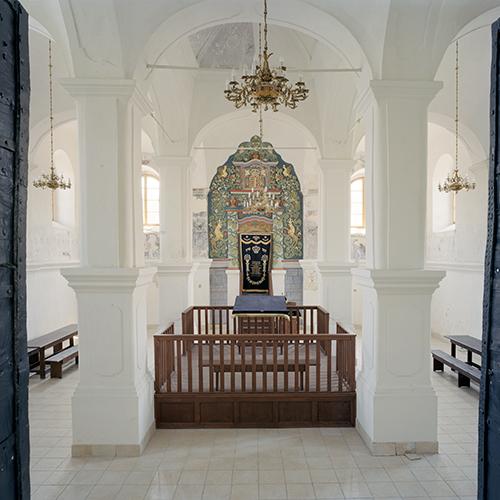IAJGS: Scars on the landscape—what is to be done?
A couple of days ago I wrote that echoes of the Holocaust pervade the present, and then I regretted posting that. I didn’t mean to imply that it Is front of consciousness for most everyday Poles, because I don’t think that is true. Then I attended a session on Thursday, the last full day of the conference, that put my half-formed idea into eloquent, even poetic expression.
Jakub Nowakowsky, director of the Galicia Jewish Museum in Krakow, is not Jewish, but he has made it his life’s work to study the forgotten sites of Jewish life in the region of the former Galicia, which constitutes the southern tier of Poland and the western portion of Ukraine. His talk was based on the core exhibition of the museum, which recalls the diversity Jewish life that once flourished in hundreds of Galician villages and cities and which was snuffed out in the Holocaust.
His theme was the absence of memory and the physical spaces that represent what is painfully missing from the modern Polish world. Synagogues repurposed as shopping malls. Cemeteries desecrated and unrestored. Mezuzahs stripped from doorways leaving traces in the peeling paint. Unmemorialized killing fields where people now walk their dogs. These, he said, are scars on the Polish landscape and in its collective psyche.
“Sometimes it is nothing that tells you something,” he said. “Here there was a polyphony of Jewish life—a diversity of flavors, tastes and noises. It was not one common experience, until the end when rich Jews and poor, observant and not, educated and unschooled all met the same fate.
“These are the traces of the past shouting the silence of the Jewish presence. Some are places on the map for visitors but most are just embedded. Unlike in other countries where they erect a Holocaust memorial, all of Poland is a memorial.”
But history does not end in 1945 at Auschwitz, he continued. Today, there is a revival of Jewish life in Krakow, Warsaw and other big cities, but it is a shadow of the vibrancy that was. Krakow in particular has become a tourist destination for Jewish heritage, a type of commercialized Disneyland.
The major issue confronting Jews and Poles alike is what is to be done with these forgotten sites of history. In most cases they are in places where tourists will never visit. They should not be built over, but should they be restored or preserved as ruins? How should they be memorialized? How can surviving Jews who want to restore a cemetery, for example, do so with participation from the local population, and not just “parachute” in and out?
Nowakowski says that Poland does not have a national policy, and that every locality makes its own hard decisions. He believes this is as it should be, because it puts the responsibility for memorialization on the local people and their children to recognize what happened and to account for it. The good news, he concluded, is that in many places Poles are beginning to recognize that the history of the Jews is their history, too. Instead of turning their heads, they now have the opportunity to embrace the commonality of the Jewish and Polish experience before, during and after the Holocaust.
For me, this moving session wrapped up many of the ideas and issues raised during the course of my week at the IAJGS conference. I decided to skip the extra-cost closing session in favor of some final interactions with other attendees, including an American-born Berliner and an Israeli couple—both with amazing genealogical stories. My week at the IAJGS in Warsaw had come to an end. Next August, the conference returns to the U.S. when it convenes in Cleveland, Ohio.


